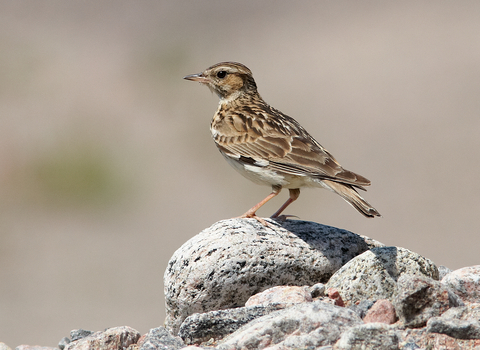
©Stefan Johansson
Woodlark
The secretive woodlark can be hard to spot. It nests on the ground on our southern heathlands and uses scattered trees and woodland edges for lookout posts.
Scientific name
Lullula arboreaWhen to see
January to DecemberSpecies information
Statistics
Length: 15cmWingspan: 27-30cm
Weight: 30g
Average lifespan: 3 years
Classified in the UK as Green under the Birds of Conservation Concern 5: the Red List for Birds (2021). Protected in the UK under the Wildlife and Countryside Act, 1981.
